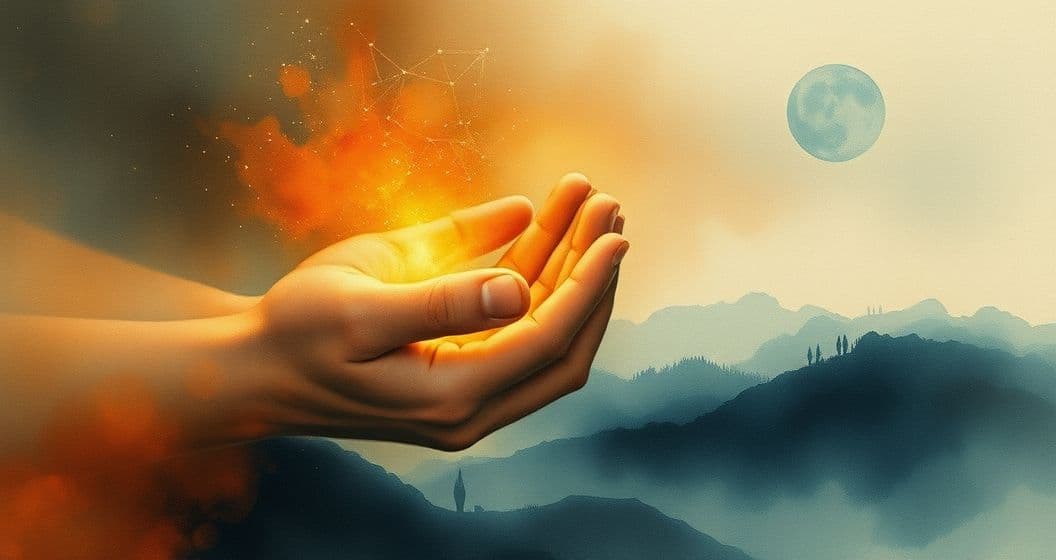Core Symbols: Embers and Constellations in Dream Language
When you dream of cradling embers, the glowing embers represent smoldering emotions or memories—flickering with potential but not yet fully alight. These are the feelings you’ve been nurturing, perhaps a passion, a regret, or a relationship that simmers beneath the surface. Cradling them isn’t just holding; it’s protecting something fragile, like tending to a flame that might either fade or grow. The constellations, meanwhile, emerge as a vast, silent backdrop—arrays of light that map meaning without words. In dreams, constellations rarely appear as random stars; they’re your mind’s attempt to organize chaos into order, connecting isolated experiences into a cohesive story.
The 'hum' that accompanies these symbols adds another layer: it’s the sound of your subconscious processing, the quiet murmur of intuition rather than logic. This isn’t just a visual dream; it’s an auditory one, too—a reminder that dreams communicate through multi-sensory cues. Imagine standing in a dark field, hands cupping warm embers, while above you, stars align into patterns you’ve never seen before. The hum is the universe’s way of saying, 'You’re not alone in this.'
Psychology Lens: From Emotional Processing to Archetypal Patterns
Want a More Personalized Interpretation?
Get your own AI-powered dream analysis tailored specifically to your dream
🔮Try Dream Analysis FreeNeuroscience helps explain this phenomenon: during REM sleep, the brain replays emotional memories, prioritizing those tied to unresolved feelings. Embers, then, might be the brain’s way of revisiting a moment you’ve been trying to process—maybe a conversation that left you feeling both seen and unheard, or a project that sparked passion but stalled. The constellations, in contrast, reflect the brain’s innate need to find meaning in chaos, a survival mechanism that organizes experiences into narrative arcs.
Carl Jung would recognize these symbols as archetypal: the hearth (embers) represents the Self, the core of your identity, while constellations echo the collective unconscious—the shared patterns of human experience. The 'hum' could be the sound of synchronicity, the universe’s subtle signal that your individual story is part of a larger tapestry. Freud might frame this as the unconscious working through repressed emotions, using the embers to keep a memory alive while constellations offer a new perspective on its significance.
Life Triggers: When Dreams Reflect Inner Crossroads
These dreams often arise during periods of transition—career shifts, relationship changes, or even the quiet moments of midlife reflection. If you’ve recently let go of something familiar (a job, a routine), the embers could symbolize the passion you’re trying to rekindle. If you’re facing uncertainty about your path, constellations might appear as vague but hopeful 'signs'—like a career choice that feels right but isn’t yet clear.
Consider someone who’s been grieving a loss: embers could represent the warmth of shared memories, while constellations remind them that those memories still guide their path. Or think of a creative person stuck in a rut: the embers might be their dormant inspiration, and the constellations their vision of where it could lead. The 'hum' becomes the internal voice urging them to listen to both the quiet doubts and the bold possibilities.
What To Do Next: From Dream to Daily Insight
Start by journaling the sensory details: How did the embers feel? Were they hot, cool, or burning? What constellations did you recognize (or not recognize)? This specificity helps your mind connect the dream to real emotions. Ask yourself: What in my life feels like I’m 'cradling' something precious right now? It might be a relationship, a goal, or even a part of yourself you’ve neglected.
Next, experiment with creating a physical representation of these symbols. Gather small objects that feel like embers (cinnamon sticks, tiny lights) and arrange them into constellation shapes. This tangible act bridges the dream’s symbolic language with your waking life, helping you externalize what’s been internal. Notice how holding the embers (or their stand-ins) makes you feel—does it calm you, energize you, or something else?
Finally, integrate this understanding into your daily routine. If the constellations felt like guidance, ask: What small step aligns with that pattern? If the embers represent passion, schedule time to tend to that flame—even 15 minutes of focused work on a project can reignite it. Remember: dreams don’t give answers; they give clues. Your job is to listen and act.
FAQ
Q: What does it mean if I feel both warmth and fear while cradling embers in my dream?
A: This tension often reflects the duality of holding onto something precious yet uncertain. The warmth might be a positive emotion (love, purpose), while fear could stem from the fear of losing control or the unknown. It’s your subconscious processing the risk of nurturing something new.
Q: Why do constellations 'hum' in dreams?
A: The hum is likely your brain’s way of encoding emotional significance—sounds in dreams often represent the emotional tone of a memory. If constellations feel like they’re humming, it may signal that you’re on the verge of recognizing a pattern or truth that’s been quietly guiding you.
Q: How do I tell if this dream is about past, present, or future concerns?
A: Embers often reference the present or recent past (unresolved feelings), while constellations lean toward future possibilities or larger life themes. The 'hum' itself is timeless, reminding you that your past, present, and future are interconnected in your subconscious story.
